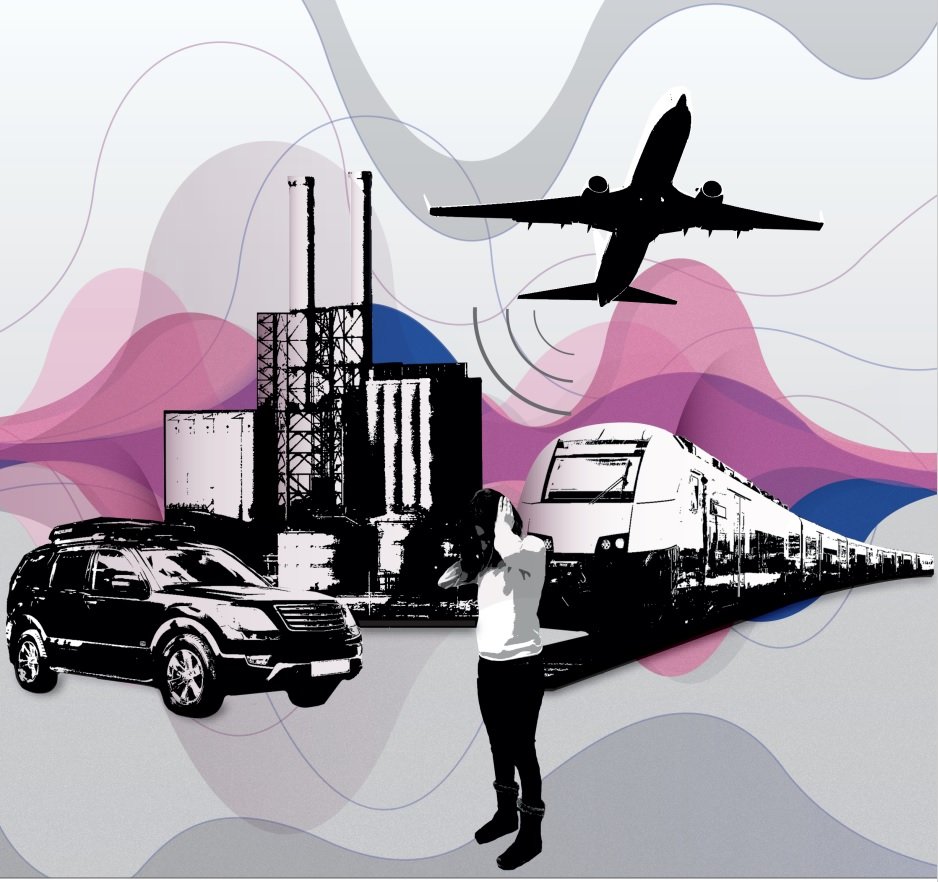Electric Vehicles – Will They Solve Noise Pollution
Electric Vehicles – Will They Solve Noise Pollution?
The popularity of electric vehicles (EVs) is on the rise, driven by factors such as increasing fuel costs, environmental concerns, and shifting demographics. As people seek ways to reduce transportation expenses, EVs present a cost-effective alternative. Furthermore, the environmental impact of traditional fuel-powered vehicles has led many individuals to search for ways to reduce their carbon footprint and minimise their environmental impact. With zero emissions, EVs offer a much more eco-friendly option than traditional fuel-powered cars, making them an increasingly desirable choice among car buyers.
One of the most notable differences between EVs and traditional fuel-powered cars is the level of noise they produce at low speeds. The noise generated by vehicles is a major contributor to urban noise pollution. According to the World Health Organisation, road traffic is Europe's second-largest source of noise pollution after railways. The noise generated by vehicles can be heard up to several miles away, significantly impacting the quality of life for those living near busy roads. For example, constant traffic noise can cause sleep disturbances, stress, and other health problems.
Image source: European Environment Agency (EEA). The image shows the number of people exposed to noise levels above 55 dB and from which sources this noise emits.
The near-silent operation of EVs can help to reduce urban noise pollution, making our cities quieter and more pleasant places to live. This is particularly true for densely populated areas, where the noise from traffic can be overwhelming.
On the other hand, the lack of noise from EVs can also pose a safety hazard, as pedestrians and cyclists may not hear them coming. The United Nations has implemented regulations to keep quiet cars from becoming dangerous and implemented regulations requiring EVs to emit a minimum level of sound at low speeds to address this issue. The Regulation introduces the minimum Acoustic Vehicle Alerting System (AVAS) sound levels, spectrum and frequency shift, depending on the vehicle’s speed forward or backwards speed. When the car’s speed increases, the sound becomes louder (50 dB at 10 km/h, 56 dB at 20 km/h and 47 dB for reversing) so that pedestrians can audibly judge the speed. To provide for environmental protection, this Regulation also specifies the maximum overall sound limit, which, while loud enough to warn road users, is still sufficient to protect against noise pollution.
Noise and Air pollution, are EVs the Whole Solution?
Noise pollution from traffic is a growing problem in many cities worldwide. As urban populations continue to expand and more people rely on cars and other vehicles for transportation, the amount of noise pollution on the roads is increasing. This can significantly impact the health and well-being of people living and working near busy roads.
Image source: Environmental noise in Europe Report No 22/2019
According to a report by Environmental Noise in Europe, an estimated 113 million people are affected by at least 55 dB of long-term noise levels. This is particularly concerning as research indicates that at least 20% of the EU population lives in areas where traffic noise harms their health. With urban growth and increasing demand for mobility, this problem is likely to worsen in the future. However, many countries, cities, and regions have taken steps to address the issue by designating quiet areas and implementing strategies to reduce noise pollution.
In California, legislators have taken action to address the problem by passing two laws in 2022. One law directs the California Highway Patrol to test noise-detecting cameras, which could eventually be used to issue automatic tickets for cars that exceed a certain noise level. Another law, SB 1097, directs the highway patrol to recommend a specific brand of noise-detecting cameras to the legislature by 2025. These cameras are already used in cities such as Paris, New York, and Knoxville; they would automatically issue tickets to drivers of vehicles that are detected as being too loud.
Image source: Galwaybeo online publication, Galway traffic nightmare
The Environmental Noise Directive (END) is the main EU law aimed at identifying noise pollution levels and taking action to address them. The END focuses on four action areas: determining exposure to environmental noise and assessing its health effects at a single dwelling level, ensuring that information on environmental noise and its effects are made available to the public, preventing and reducing environmental noise, and preserving environmental noise quality in areas where it is good.
Electric vehicles (EVs) have been touted as a potential solution to noise and air pollution. One of the main benefits of EVs is that they produce significantly less noise than internal combustion engines (ICEs) at low speeds due to their electric motors, which are much quieter than ICEs. However, it's important to note that EVs still produce noise from other sources, such as tires, wind resistance, and air conditioning. Above around 45 km/h road, noise is the main source of noise pollution from traffic. Road noise is the sound produced by the tyres interacting with the surface of the road and by the air compressed in the treads of the tyres. No matter how a car is powered, this environmental noise needs to be addressed. EV charging stations can also produce noise. Therefore, a comprehensive approach to addressing noise and air pollution that considers all sources is needed to truly solve these issues.
Finally, apart from the effects of noise on human health, there is increasing scientific evidence regarding the harmful effects of noise on wildlife. Recent literature calls for conservation actions to protect wildlife from noise pollution. As larger roads and faster vehicles are built, we need to ensure wildlife is properly shielded from noise to maintain biodiversity. Read our blog on ocean noise pollution and its damaging effects on marine life.




